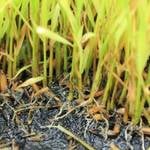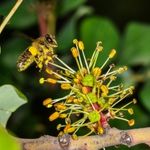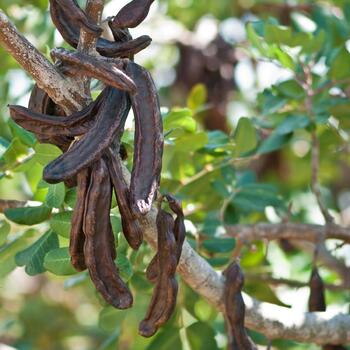
How to Grow Carob Seeds
Grow Guide #2493
Family: Fabaceae
Binomial name: Ceratonia siliqua
Life Cycle: Perennial
This 'How to Grow' guide details everything a home gardener needs to know to plant, grow and care for Carob (Ceratonia siliqua).
When to Sow Carob Seeds
Carob is a perennial plant that grows year round in most climates. Use the table below to identify the best time of year to sow carob seeds in your climate.
| JAN | FEB | MAR | APR | MAY | JUN | JUL | AUG | SEP | OCT | NOV | DEC | |
|---|---|---|---|---|---|---|---|---|---|---|---|---|
| Cool | ||||||||||||
| Temperate | ||||||||||||
| Sub-Tropical | ||||||||||||
| Tropical | ||||||||||||
| Arid |
Preparation
Carob plants are dioecious, meaning individual plants have either male or female flowers. To achieve pollination at least one male-flowering plant and one female-flowering plant need to be planted. To achieve this, plan to propagate more seedlings than you need and discard excess male plants, and make sure you have space for at least two trees (ideally more).
Carob plants are perennial, meaning they live for several years. Choose a permanent position where plants can grow undisturbed by regular digging.
Carob plants grow into large plants when mature. Ensure there is space for seedlings to be planted 10m apart so they have space to grow to their mature size.
Carob is best suited to warm and temperate climates; trees grown in cool climates where winter temperatures are lower than -6°C will be set back by the cold and may not produce fruit.
Carob plants are best grown in full sun. Choose a location that will receive at least 6 hours of full sun each day.
Carob plants need a well drained soil enriched with plenty of organic matter. Prepare soil by weeding it thoroughly, digging it over to loosen it and adding aged animal manure or compost. Keep the area free of weeds until planting. Learn more about preparing soil for planting here.
How to Sow Carob Seeds
Scarifying seeds prior to planting will improve the speed and success of germination. Scarification involves intentionally damaging the hard outer coating of the seeds to allow water to reach the seed's embryo. Use a sharp knife to make a shallow nick in each seed's shell, or gently wear away a section of the husk using fine sandpaper or a nail file. Read more about scarification here.
Carob seeds grow best when they are raised in tubes and transplanted to the garden once established. They have long tap roots and are best planted in forestry tubes or other deep containers.
- Fill tubes with a good quality seed-raising mix. Use fresh mix to avoid the risk of damping off.
- Sow seeds 50mm deep.
- Keep soil moist but never wet or dry.
- Seeds should germinate in around 12-38 days at a soil temperature of 22-26°C.
- Transplant seedlings to the garden or a larger pot once they are 8-10cm tall. Take care not to damage the tap root of the seedling when transplanting.
- Plant out, spacing plants 10m apart.
Protect seedlings from grazing animals using stakes, netting or a cage.
Carob seedlings are sensitive to frost. In cool climates plant out seedlings after all danger of frost has passed. Protect plants from frost by mulching thickly or using frost covers for the first two winters after planting out.
Tip: Seeds of this variety can be slow to germinate. Take note of the expected germination time, be patient and follow the recommended depth and temperature guidelines closely for the best chance of success.
How to Grow Carob
Carob plants are drought tolerant once established and grow best in soil that is dry and very well drained. Let the soil dry out between watering, and only water when the soil is dry about 10cm below the surface (test this by scratching away a little soil with your finger), even in summer. Water deeply in the early morning or late afternoon. Avoid watering the leaves of plants to avoid fungal diseases. Learn more about watering here.
If soil was well prepared no extra fertiliser should be necessary. In poor soil or to give your plants an extra boost, application of a balanced fertiliser or one formulated for fruit and vegetables can be beneficial:
- Apply slow release fertiliser at the recommended rate when transplanting or when seedlings are 5-10cm tall.
- Apply liquid fertiliser at the recommended rate and frequency while plants are fruiting or flowering.
How to Harvest Carob
Carob should be ready to harvest in approximately 5-8 years.
Carob pods for pulp are ready to harvest in spring when they are green and flexible and 10-15cm long. Cut them from the tree using snips, secateurs or a long-handled harvesting tool. Fresh pods can be split open and eaten, avoiding the seeds.
Carob pods for milling into powder are ready to harvest when the pods turn dark brown and can be pulled easily from the tree. Harvest the pods using a pole or rake to shake the branches and make the pods fall to the ground. Dry pods for one to two days in the sun. Pods can be processed into powder by splitting them and removing the seeds, or stored whole for up to a year.
Common Problems when Growing Carob
Like all plants, carob is susceptible to some pests, diseases and other problems. Below is a list of the most common problems gardeners encounter when growing carob plants:
 Damping off is caused by a fungal growth that transfers from the soil to seeds or tender seedlings. Seeds may appear not to germinate, or young plants start to rot when they emerge from the soil and become soft and mushy at the base before dying. Use new potting mix if raising seedlings, do not water foliage and avoid waterlogged soil. Read more about damping off here.
Damping off is caused by a fungal growth that transfers from the soil to seeds or tender seedlings. Seeds may appear not to germinate, or young plants start to rot when they emerge from the soil and become soft and mushy at the base before dying. Use new potting mix if raising seedlings, do not water foliage and avoid waterlogged soil. Read more about damping off here. Possums, birds and other animals can ruin a large percentage of your harvest overnight. Physically exclude pests by using netting or cages, or try spraying plants with a pungent homemade spray made from garlic, fish oil or mustard.
Possums, birds and other animals can ruin a large percentage of your harvest overnight. Physically exclude pests by using netting or cages, or try spraying plants with a pungent homemade spray made from garlic, fish oil or mustard. No fruit will be produced when only one plant, or several plants of the same sex, are grown. Dioecious plants produce male and female flowers on separate plants, so at least one male and one female plant are needed for fruit to be produced. Grow several plants at the recommended planting distance, with at least one male and female plant in each group.
No fruit will be produced when only one plant, or several plants of the same sex, are grown. Dioecious plants produce male and female flowers on separate plants, so at least one male and one female plant are needed for fruit to be produced. Grow several plants at the recommended planting distance, with at least one male and female plant in each group.


.png)



